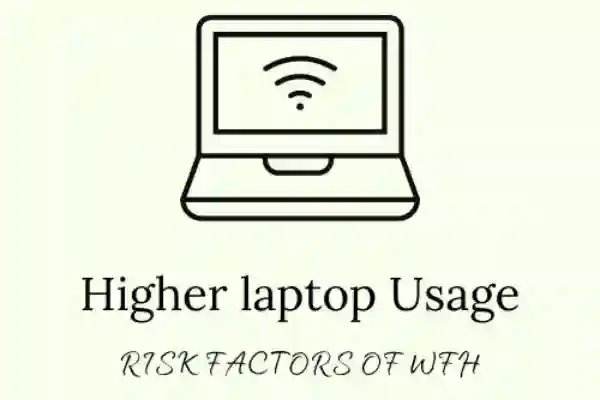Laptop health hazards: Why Laptop Placement Matters for Your Well-Being
Affect on Reproductive Health
As laptops become integral to our daily lives, understanding their potential health hazards, especially in relation to fertility, is crucial. In this exploration, we delve into the impact of laptop placement on male fertility, shedding light on potential risks and receiving expert recommendations to safeguard reproductive well-being.

Risk Factors:
Prolonged laptop use, particularly when placed on the lap, poses significant laptop health hazards to male fertility. The elevation in testicular temperature associated with this habit may contribute to low sperm count and impaired quality – common factors in fertility challenges. Age-related declines in fertility, coupled with conditions like erectile dysfunction and diabetes, can further amplify these risks.

Expert Recommendations:
Dr. Karishma Dafle, a fertility consultant at Nova IVF Fertility, emphasizes the importance of changing laptop placement regularly. This simple adjustment can help mitigate the risk of prolonged exposure to elevated testicular temperatures, providing a proactive approach to maintaining reproductive health.
As we strive for a balance between our digital lives and well-being, adopting these recommendations can play a crucial role in safeguarding fertility amidst the laptop era.
Musculoskeletal Pain and Eye Strain
In both teens and adults, the rise in musculoskeletal pain and eye-related issues is closely tied to the laptop health hazards of improper laptop use. Spending extensive hours in front of a laptop poses significant risks, leading to conditions like musculoskeletal injury and Computer Vision Syndrome (CVS).
Musculoskeletal Pain:
Improper laptop use contributes to musculoskeletal pain, where prolonged strain can impact muscles, ligaments, tendons, and nerves. Bending the neck to view a laptop screen, for instance, strains muscles along the back of the neck. The domino effect of such injuries can cause additional strain on other muscles, emphasizing the importance of prompt medical attention. Early intervention is crucial, as untreated pain may become chronic.
Computer Vision Syndrome (CVS):
Staring at laptop screens for extended periods can cause an other laptop health hazards which my induce CVS, characterized by neck pain, headaches, eye fatigue, and visual discomfort. Bright screens, improper brightness and resolution settings, reflections, and difficult-to-read font configurations contribute to eye strain.
Regular eye exams and adherence to laptop ergonomics are vital for preventing and treating CVS. Additionally, adopting the 20-20-20 rule and ensuring adequate rest for the eyes are simple yet effective practices to alleviate strain and prevent myopia—a condition where distant objects become blurry due to eye strain.
As technology continues to dominate our daily lives, understanding and addressing these health concerns become paramount for maintaining overall well-being.
Bottome line
In optimizing lap usage to reduce laptop health hazards, it’s crucial to address inappropriate placement and extended usage for enhanced well-being. The bottom line is to prioritize ergonomic design, ensuring that devices are positioned to minimize strain and discomfort. Efficient ergonomics can significantly reduce the risk of musculoskeletal issues associated with prolonged laptop use.
To reduce lap-related discomfort, consider incorporating adjustable stands or lap desks. These accessories provide flexibility in positioning devices at eye level, promoting a more natural and comfortable posture. Additionally, encourage regular breaks to combat the negative effects of extended use. A simple reminder to stand, stretch, and move can prevent stiffness and fatigue.
Furthermore, educate users about the importance of maintaining a healthy balance between lap and desk usage to minize the laptop health hazards.While the convenience of working from various locations is a modern luxury, awareness of proper ergonomics is paramount. Emphasize the significance of adapting workspaces to personal comfort, advocating for a workspace setup that supports both productivity and physical well-being.
In conclusion, prioritize user education, promote ergonomic accessories, and emphasize the need for breaks to mitigate lap-related issues to avoid the laptop health hazards. By fostering a culture of mindful device usage, we can create healthier and more comfortable environments for individuals who rely on laptops for extended periods.



